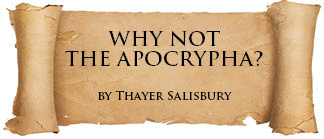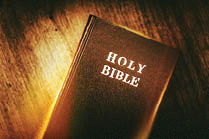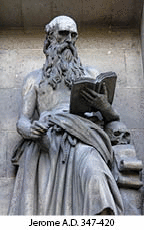
In 1924, M. R. James published The Apocryphal New Testament. This collection of the books rejected from the New Testament was published so that people could see why these books had been rejected. In 1924, James could write, “It is a matter of common knowledge that there exist such things as Apocryphal Gospels, Acts, Epistles, Revelations …” (xi).
Somewhere between 1924 and 2000 people seem to have forgotten this fact. When they were reminded of it, by books like The Holy Blood and the Holy Grail and The DaVinci Code, it seemed as if a conspiracy had been uncovered.
There was no conspiracy to hide these books. If a person wanted them, they could be purchased. No effort was made to prevent their publication or distribution. Copies of the early manuscripts of these books were (and are) on public display at museums around the world, and were (and are) available for study by scholars. The conspiracy claim was a public relations hoax designed to increase the sale of the books that supposedly revealed the conspiracy.
What we need now is what existed in M. R. James' day — more widespread knowledge of the nature of these books and the reasons why they have been consistently rejected by Christians.
NEW TESTAMENT APOCRYPHA
You may have heard that some churches have books in their New Testaments that others do not include. This is not true. All churches accept the same twenty-seven books in the New Testament canon. Some denominations might like to remove books that do not support their favorite doctrines. They cannot do so because the evidence for their inclusion is so strong. William Barclay has been quoted as saying, “the New Testament books became canonical because no one could stop them doing so” (Bruce 1988:282).
Some might like to insert another book to support their doctrines, but they cannot do so. There is no other book with the evidence to support its inclusion. These twenty-seven books speak with authority, they speak in harmony, they were accepted by the early church. This cannot be said of any other book. Many divisions have plagued Christians, but all Christians use the same New Testament books.
 “But wait,” you may say, “you said above that there are other books.” Yes, there are other books but they are not accepted by any church, and with good reason.
“But wait,” you may say, “you said above that there are other books.” Yes, there are other books but they are not accepted by any church, and with good reason.
According to Dan Brown's fictional account, The DaVinci Code, the apocryphal gospels present a fully human Jesus, who is not God incarnate. The truth is the reverse of Brown's claim. The apocryphal gospels were rejected because their Jesus was not human enough. Whereas the canonical gospels present him as fully God and fully man, the apocryphal gospels present him as supernatural with few, if any, human characteristics.
According to Brown, the apocryphal gospels are pro-female and were rejected because of the chauvinistic bias of the early church. Again, this claim is contrary to the facts. Some of the apocryphal New Testament books, the Gospel of Thomas in particular, are extremely chauvinistic themselves.1
Referring to the Gospel of Philip, one of Brown's fictional experts says, “Any Aramaic scholar will tell you, the word companion, in those days, literally meant spouse” (DaVinci Code, 246). In fact, any Aramaic scholar would take one look at the Gospel of Philip and say, “Sorry, I cannot help you. This document is not written in Aramaic.” For the Gospel of Philip, contrary to Brown's claim, is in Coptic, not Aramaic, and the word for companion at that point is neither Aramaic nor Coptic, but Greek.
Dan Brown, and those of his ilk, are unreliable guides to the New Testament Apocrypha. Read it for yourself in the M. R. James edition of 1924, or the J. K. Elliott edition of 1993, and you will quickly agree with the judgment of the early church. These books are not Scripture.
Elliott gives this summary of the Infancy Gospel of Thomas. “The main thrust of the episodes is to stress in a crudely sensational way the miraculous powers of Jesus … . The miracles in Thomas are often capricious and even destructive. Jesus is an enfant terrible who seldom acts in a Christian way!” (68). As examples of the evil miracles Elliott mentions, I will name three. The Jesus of Thomas strikes his playmates dead when they displease him. When the townspeople complain of this, they are struck with blindness. The Jesus of Thomas is so destructive that Joseph finally has to tell Mary, “Do not let him go outside the door, for all those who provoke him die” (Thomas 14:3). Is this a book we need in our Bible?
In keeping with the Gnostic's negative attitude toward the human body and normal bodily functions, the Protoevangelium of James teaches that Mary did not give birth to Jesus in the normal way. Instead, he came out through her navel so that her hymen remained intact (chapters 19 and 20). Is this a book we need in our Bible? Can we reconcile this attitude with the known scriptures (Genesis 1:28; 1 Corinthians 7; Hebrews 13:4)?
Not everything in the New Testament Apocrypha is as extreme as the examples given, of course, but the books of the New Testament Apocrypha do not measure up. Historically, they were not accepted by the early church, and doctrinally, they clearly are not in harmony with the known scriptures. To accept these books, we would have to reject our current canon. We would also have to re-envision Christ as a powerful but selfish miracle worker, with little in the way of a message.
OLD TESTAMENT APOCRYPHA
The situation is quite different with regard to the Old Testament. We are not all using the same Old Testament. There are several different views regarding the Old Testament canon.
Most churches accept only the thirty-nine books common to all Old Testaments. This might be called the “Protestant” canon. All Bibles have these, and no serious effort is being made to remove any of them. The Roman Catholic church accepts these same thirty-nine books and also additional works that Protestants refer to as Apocrypha. Anglicans also accept the thirty-nine and include the Apocrypha in their Bibles, but for Anglicans it is to be read only for “example of life.”
 In the Anglican church, no doctrine may be established by appeal to the Apocrypha. The Orthodox churches accept all the books of the Protestant canon, the Roman Catholic canon, and a few additional works.
In the Anglican church, no doctrine may be established by appeal to the Apocrypha. The Orthodox churches accept all the books of the Protestant canon, the Roman Catholic canon, and a few additional works.
Most churches reject the apocryphal books for a variety of reasons. Some of them do not speak with authority. Others are not in harmony with the accepted books. Although the apocryphal books were accepted by some people in the early church, the evidence for their inclusion is weak.
Some of these books do not even claim to be from God. The book of Ecclesiasticus2 begins with a statement that its author “had acquired considerable proficiency” in the study of the Law and the Prophets. Second Maccabees ends with the statement, “If it is well told and to the point that is what I myself desired; if it is poorly done and mediocre, that was the best I could do” (2 Maccabees 15:38 NRSV). These books are not even claiming to be from God. So there is no reason to accept them as a part of Scripture.
 Some of the apocryphal books teach falsehoods. The book of Judith begins with the amazing words, “It was the twelfth year of the reign of Nebuchadnezzar, who ruled over the Assyrians in the great city of Nineveh.” The canonical books universally teach that Nebuchadnezzar was a Babylonian, not Assyrian. So this book is rejected for contradicting the rest of Scripture (Editor's note: This also contradicts secular history).
Some of the apocryphal books teach falsehoods. The book of Judith begins with the amazing words, “It was the twelfth year of the reign of Nebuchadnezzar, who ruled over the Assyrians in the great city of Nineveh.” The canonical books universally teach that Nebuchadnezzar was a Babylonian, not Assyrian. So this book is rejected for contradicting the rest of Scripture (Editor's note: This also contradicts secular history).
Some people may find these works to be edifying, but that is not the point of including a book in the canon. We should not include every edifying book. Only those books that are from God should be included. Books that are from God are Scripture, even if we do not like them. Books not from God are not Scripture, even if we like them.
Jerome, a highly respected Catholic scholar, rejected the Apocrypha on the basis of his study of the original languages. Although Jerome included the Apocrypha in his translation of the Bible, he clearly did not consider it canonical (Bruce 1988: 87 – 93).
It seems clear that the rejection of the Apocrypha is correct. The thirty-nine books of the Protestant Old Testament canon are all that we should treat as Scripture.
The Old Testament provides essential background that helps us understand the work of Christ. It would be nearly impossible to understand the gospel without the Old Testament. But the Old Testament does not teach us the saving gospel. Knowing the exact limit of its canon is not essential to our faith in Christ.
CONCLUSION
 All Christian denominations agree on the New Testament canon. There is some disagreement about the Old Testament canon. But there is no disagreement about the canon that affects our salvation. People can learn God's will from a Protestant, Anglican, or a Catholic Bible.
All Christian denominations agree on the New Testament canon. There is some disagreement about the Old Testament canon. But there is no disagreement about the canon that affects our salvation. People can learn God's will from a Protestant, Anglican, or a Catholic Bible.
Concerning the Old Testament, we should concentrate our study on those books that are accepted by all. There is no need to make a major issue of the extra books in the Catholic Bible. While the acceptance of the New Testament Apocrypha would necessitate a complete rewriting of Christianity, the use or non-use of the Old Testament Apocrypha does not have such a major effect.
NOTES:
1. The Gospel of Thomas closes with this interesting exchange. “Simon Peter said to them, ‘Make Mary leave us, for females don't deserve life.’ Jesus said, ‘Look, I will guide her to make her male, so that she too may become a living spirit resembling you males. For every female who makes herself male will enter the kingdom of heaven.’ ”
2. Which is also known as The Wisdom of Jesus ben Sirach.
REFERENCES:
Brown, Dan. The DaVinci Code. New York: Doubleday, 2003.
Bruce, F. F. The Canon of Scripture. Dowers Grove, IL: InterVarsity Press, 1988.
Elliott, J. K. The Apocryphal New Testament. Oxford: Oxford University Press, 1993.
James, M. R. The Apocryphal New Testament. Oxford: Oxford University Press, 1924.
Picture credits:
© Rangizzz. Image from BigStockPhoto.com.
© sorinus. Image from BigStockPhoto.com.
© duallogic. Image from BigStockPhoto.com
© zatletic. Image from BigStockPhoto.com.
© Anelina. Image from BigStockPhoto.com
